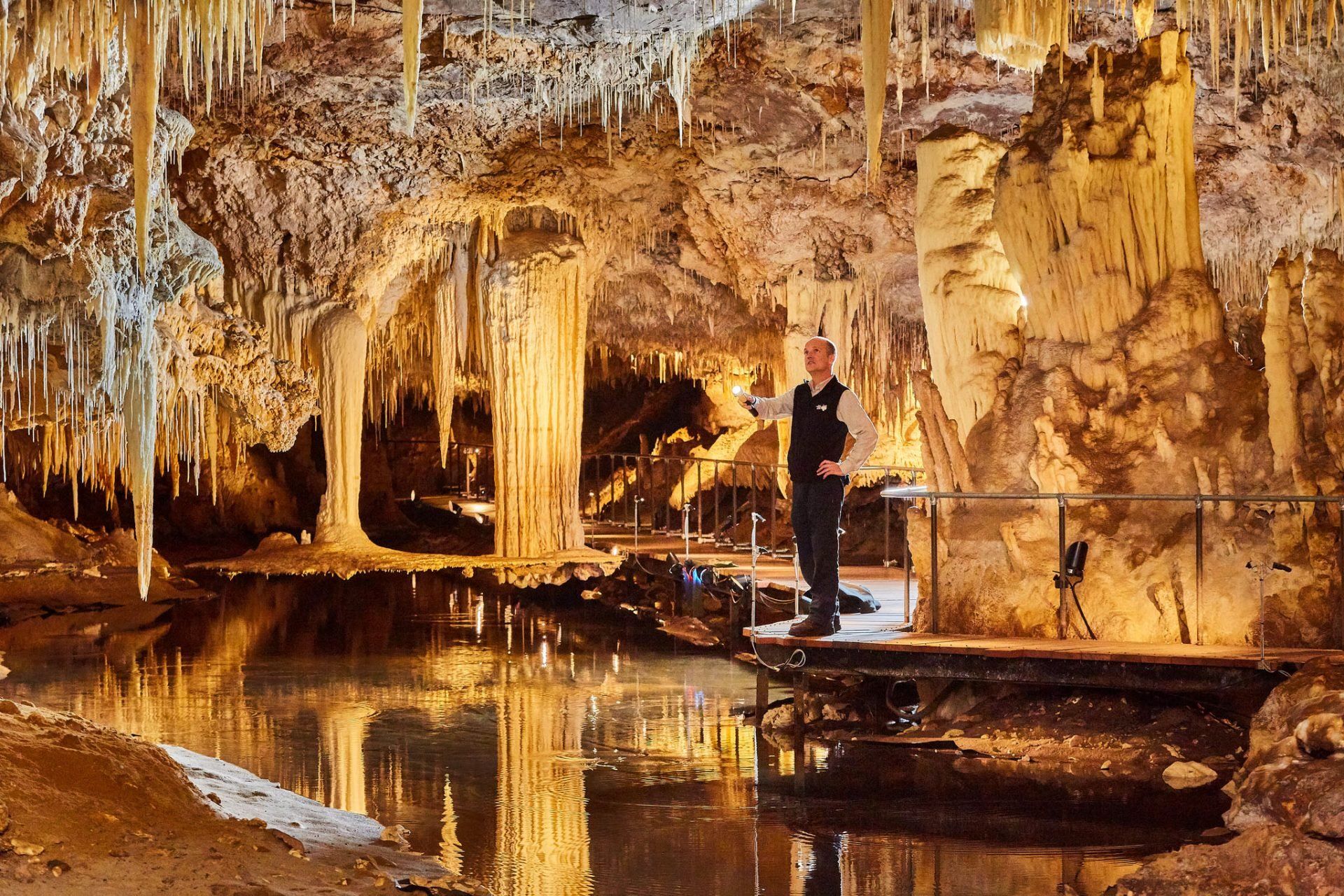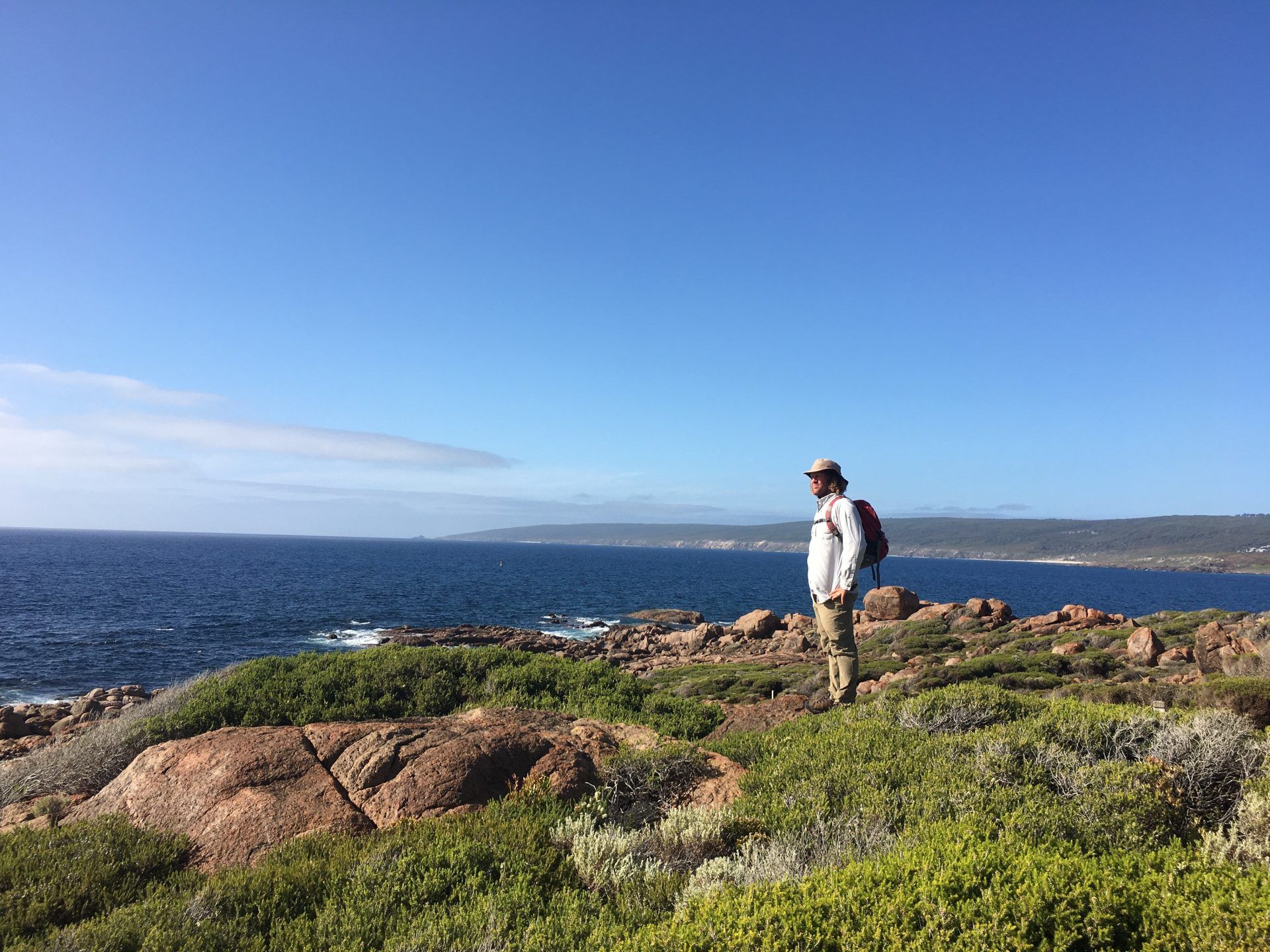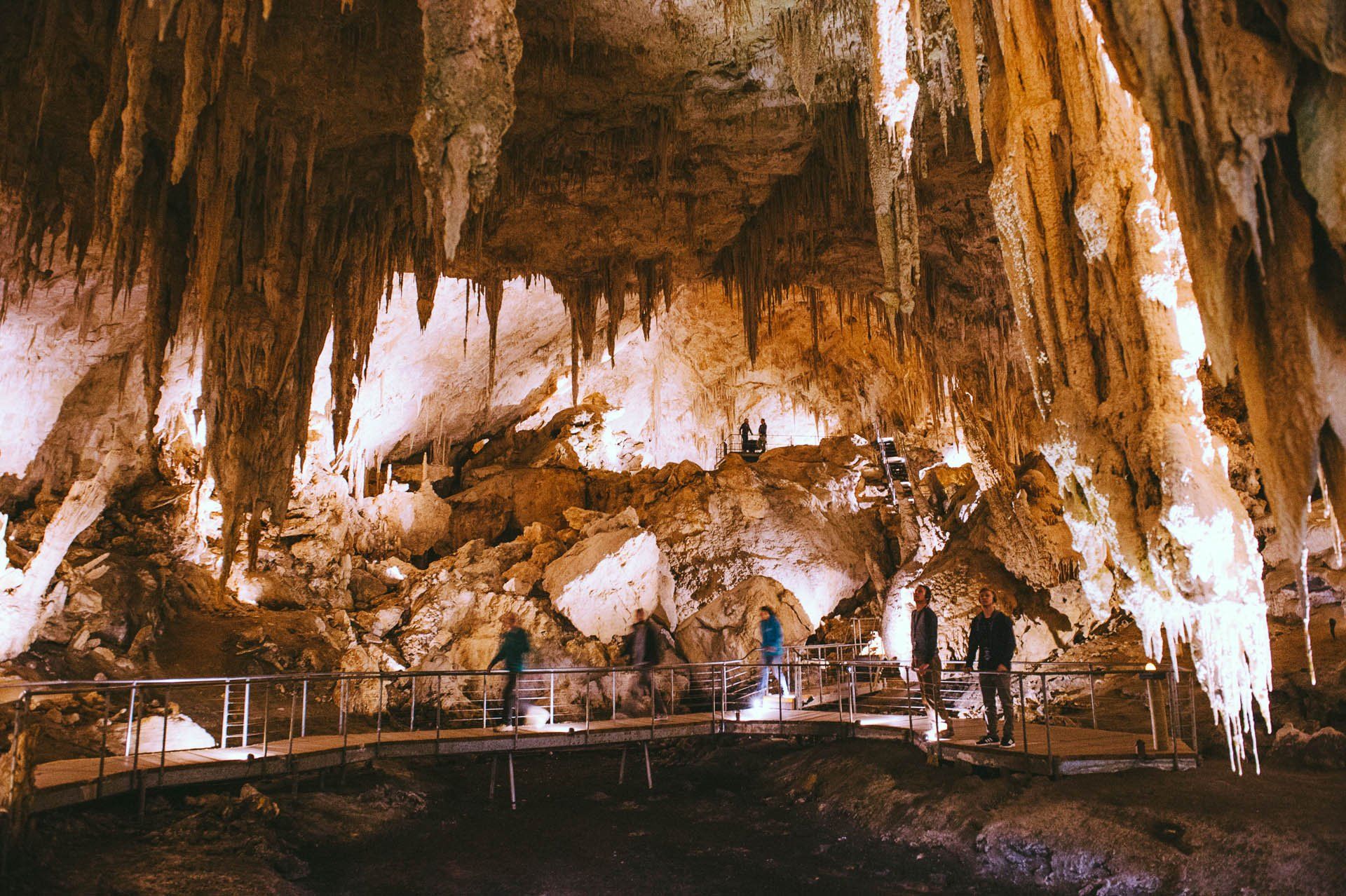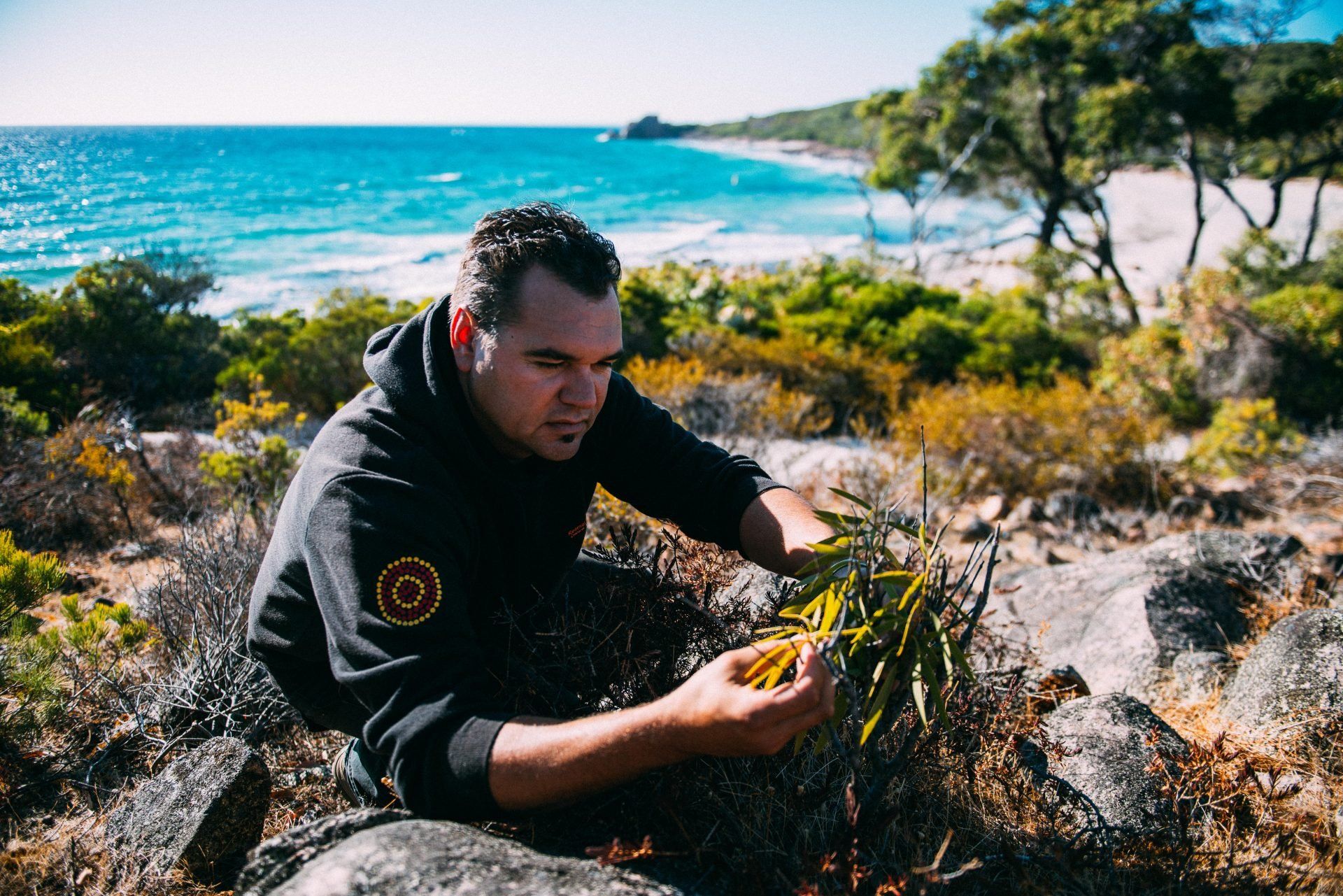A fascinating history lies beneath the limestone cliffs and granite outcrops of the Leeuwin Naturaliste National Park.

MILLIONS OF YEARS AGO: GRANITE AND GONDWANA
The Gondwana super-continent, made up of most of the land masses in today’s southern hemisphere, along with the Arabian and Indian continents, broke up between 170 and 23 million years ago. A natural phenomena of the Margaret River Region.
Mammoth Cave guide Andrew Green explains that the Leeuwin Naturaliste Ridge broke away with India and slowly drifted about 70 kilometres west before breaking free; “We often joke with our visitors who ask about the granite, ‘if it wasn’t for some mini quakes, we’d all be in India eating chapatis right now’.”
Gene Hardy from Cape to Cape Explorer Tours explains it to guests with a mud map drawn in beach sand; “For a long time, the Leeuwin Naturaliste Ridge was an island separated by a deep ocean, with 70 kilometres between the ridge and the scarp.” Over time that channel of sea slowly filled with sediment to form the Swan Coastal Plain, Scott Coastal Plain and Whicher Scarp.

This natural phenomena of limestone cap led to the formation of over a hundred caves along the Leeuwin Naturaliste Ridge and in the modern day Leeuwin Naturaliste National Park. Hence Caves Road got its name.
“Our sand is made up of crushed up coral and shell fragments, which makes a porous kind of limestone. It’s also really, really rich in calcium carbonate. Water flows through it easily which makes for lots of crystal, and that’s how we’ve got so much more crystal for the relatively young age of these caves, than caves elsewhere.” The crystal caves must be seen to be believed; Jewel and Lake Cave have particularly beautiful formations.

Thylacaleo Carnifex had the build of a rugby player; muscly and thickly built with an exceptionally powerful jaw. It had guillotine-like teeth for shearing meat off bones and a habit of climbing trees above known kangaroo trails. “It would wait for a kangaroo then jump down, piercing its windpipe. We often say to visitors today, Australian koalas and joeys are pretty cute now, but back in the day it was a much more bloodthirsty scene with these supremely adapted, carnivorous, predatory marsupial lions,” says Andrew Green.

Shifting continents and multiple ice ages created a unique geology in the modern day Leeuwin Naturaliste National Park. “It provided this little bubble between the Capes. An incredible canvas for recreational opportunities and activities, it gives us the caves, the waves – all the world class waves break on limestone reefs covering granite. The limestone caves give the crayfish and abalone plenty of habitat, too.”
Josh Whiteland, Wadandi cultural custodian and operator of Koomal Dreaming and Cape Cultural Tours speaks of stories handed down by his ancestors; “Aboriginal people have witnessed a lot of things over time, from changes in climate to ice ages. I work with many interesting and inspiring, positive Aboriginal people from the south to the north. I like sharing stories through tourism; it’s a great opportunity to create awareness.”
His tours take guests to remarkable places; Cape Naturaliste, Meelup Regional Park and Ngilgi Cave. “We’re pretty blessed to live where we live. I personally love the bay; I love Meelup Regional Park. The west coast in the morning and the bay in the afternoon. We’re saltwater people so I’m in the ocean every chance I get.”
“We celebrate the culture of the place by being on country and in tune with the seasons. We celebrate every couple of months the change of season, which is every two months on the Aboriginal calendar. Bunuru is one of my favourite seasons; February and March is a humid time of year, we’ve got all the marri flower, white tailed black cockatoos and migrating salmon. Lots of herring and native bees come out this time of year, and families would celebrate with gatherings along the coast, catching salmon and smoking it on the fire.”
